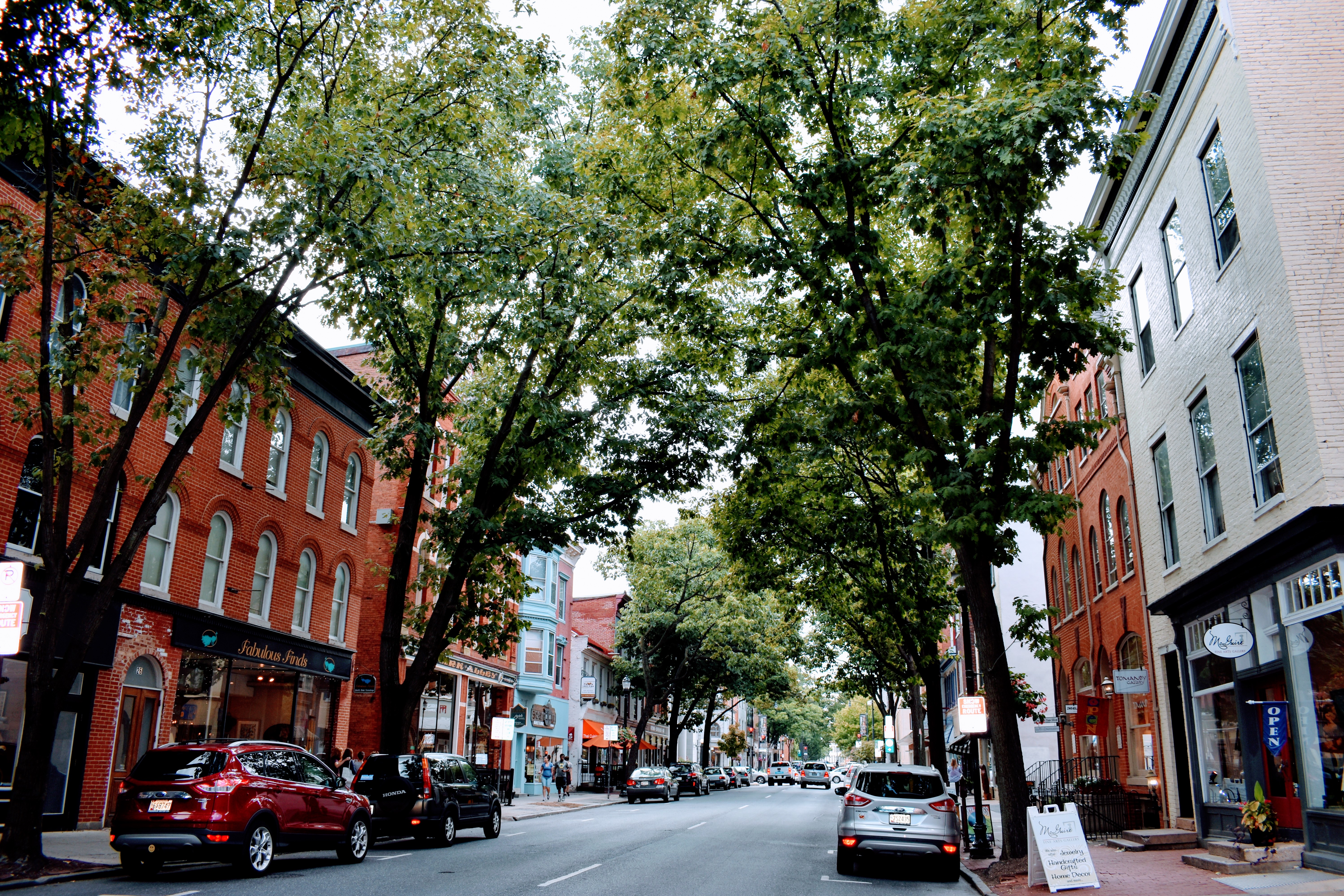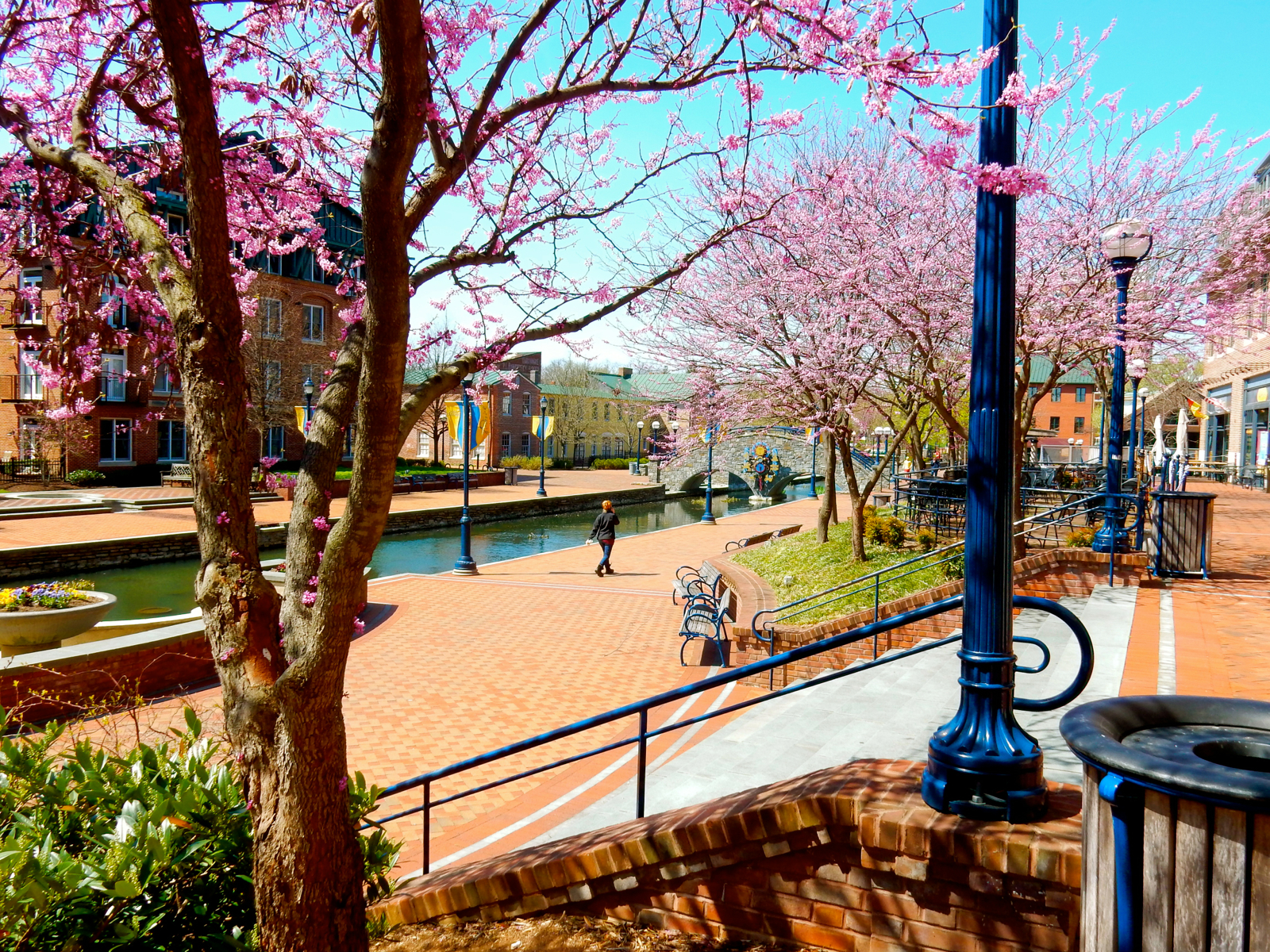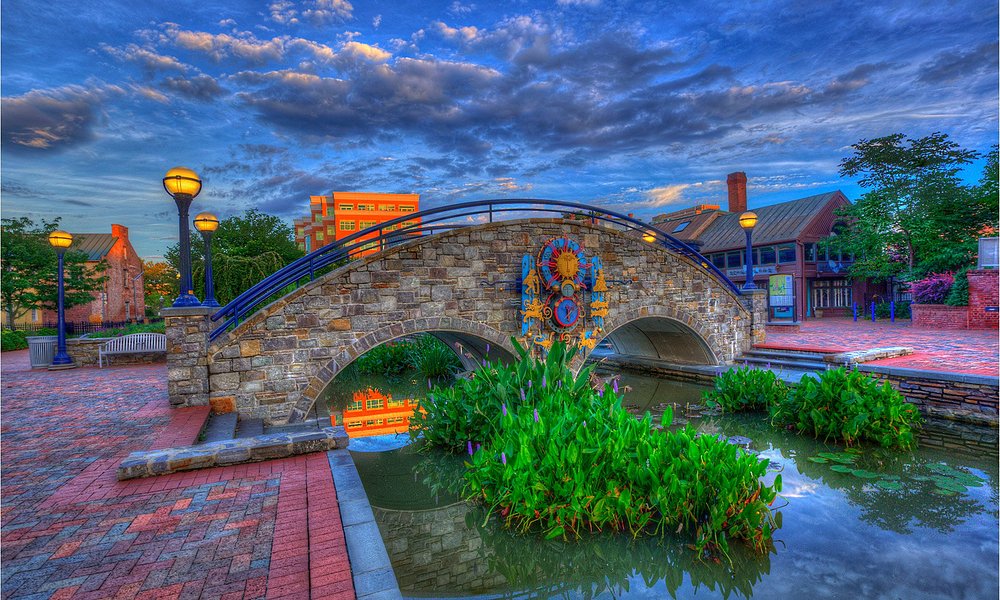All Categories
Featured
Table of Contents
In 60091, Rhianna Huynh and Micah Buchanan Learned About Date Ideas Frederick Md
Why Is Dental Care Important? Dental care is very important to everyone. It is a way that you can maintain a healthy oral health and to keep your teeth from becoming decayed or infected. Here are some reasons why it is important to get regular dental checkups. When you are younger, your teeth can be very delicate so proper oral hygiene is essential. This means that you should brush and floss every day. It is also a good idea to visit your dentist at least once a year for checkups and cleanings. Your dentist will be able to take a look at your teeth and tell you what they think needs to be done. It is important to remember that some dental procedures may be necessary to treat a cavity or disease. The procedure is known as an orthodontic procedure and a crown is typically placed on the tooth to support the tooth. Crowns may also be used to protect a tooth from infection. There are other types of problems as well such as tooth decay and gum disease. Gum disease can result in gingivitis. If you have gingivitis and you neglect your teeth, it can cause gum disease. It is important to see your dentist on a regular basis for these types of problems. When visiting a dentist's office for this type of procedure, the patient is advised to follow the doctor's recommendation regarding how often he or she should clean their teeth and gums. Some professionals believe the best way to maintain proper dental hygiene is through daily brushing, while others prefer to practice twice or three times a day. Another common type of problem is gum disease. Your dentist can diagnose this condition by taking a close look at your mouth. They will be able to tell you what needs to be done for your condition and if you need dental treatment or not. Another option for the dentist's office is to use a dental tray. This tool is similar to a mouthguard but the dentist inserts it into the mouth to clean the gums and teeth. Periodontal disease, as an example, can be controlled and even eliminated with regular visits to the dentist. This type of dental problem is less common than cavities and gum disease. So, if you or your family has experienced any of these conditions, you may want to schedule an appointment to have your teeth cleaned. Some dentists offer dental health care as part of their overall practice. You can select a dentist that is able to offer the comprehensive treatment that is required for your specific problem. Before you make your decision, ask your dentist about your oral health history and any symptoms that you may have. Bacteria can build up and can cause tooth decay. This will lead to gum disease, if your dentist does not remove the bacteria from the teeth. If you do not brush your teeth often enough or do not brush at all, your teeth can get covered with bacteria. The teeth are very delicate and require regular cleaning to prevent tooth decay. The dentist will usually clean the teeth between professional visits. Some common practices include using a root canal to treat cavity problems and maintaining the overall health of the teeth and gums. The dentist may also recommend braces to help strengthen the teeth. Dental clinics use a variety of different methods to treat these problems. Most clinics offer dental procedures, including cleaning, scaling and filling. You will probably have your teeth cleaned by a professional dentist to remove the bacteria and plaque from the teeth. Tooth grinding, which is a common cause of cavities, may require root canal treatment. You will need to visit a dentist to determine what steps need to be taken to prevent tooth loss. If tooth grinding is a result of tooth decay, your dentist may prescribe antibiotics and other medications to help with the problem.
The railroad endured through mergers and the Penn-Central bankruptcy. Nevertheless, the State of Maryland got the Frederick and Pennsylvania Line in 1982. Since 2013, all but two miles (3. 2 km) at the southern terminus at Frederick still exist, run by either the Walkersville Southern, or the Maryland Midland Railway (MMID) railways.

Mainly German Jewish immigrants organized a neighborhood in the mid-19th century, producing the Frederick Hebrew Parish in 1858. Later on the parish lapsed, however was rearranged in 1917 as a cooperative effort in between the older settlers and more just recently shown up Eastern European Jews under the name Beth Sholom Churchgoers. In 1905, Rev.
B. Hatcher began the First Baptist Church of Frederick. After the Civil War, the Maryland legislature developed racially segregated public facilities by the end of the 19th century, re-imposing white supremacy. Black institutions were generally underfunded in the state, and it was not till 1921 that Frederick established a public high school for African Americans.
The building presently houses the Lincoln Elementary School. The Laboring Sons Memorial Grounds, a cemetery for free blacks, was founded in 1851. Carroll Creek running through Baker Park, with the Joseph Dill Baker Carillon in the background Frederick lies in Frederick County in the northern part of the state of Maryland.
Today it is situated at the junction of Interstate 70, Interstate 270, U.S. Route 340, U.S. Path 40, U.S. Route 40 Alternate and U.S. Path 15 (which runs northsouth). In relation to nearby cities, Frederick lies 46 miles (74 km) west of Baltimore, 49 miles (79 km) north and somewhat west of Washington, D.C., 24 miles (39 km) southeast of Hagerstown and 71 miles (114 km) southwest of Harrisburg, Pennsylvania.
426294, 77. 420403). According to the United States Census Bureau, the city has a total area of 23. 96 square miles (62. 06 km2), of which 23. 79 square miles (61. 62 km2) is land and 0. 18 square miles (0. 47 km2) is water. The city's location is primarily land, with small locations of water being the Monocacy River, which goes to the east of the city, Carroll Creek (which goes through the city and causes regular floods, such as that during the summer of 1972 and fall of 1976), as well as several community ponds and small city owned lakes, such as Culler Lake, a manufactured small body of water in the downtown location.
It lies to the west of the fall line, which offers the city a little lower temperature levels compared to places further east. According to the Kppen Climate Classification system, Frederick has a damp subtropical climate, shortened Cfa on environment maps. Climate information for Frederick, Maryland Month Jan Feb Mar Apr May Jun Jul Aug Sep Oct Nov Dec Year Record high F (C) 74( 23) 79( 26) 87( 31) 94( 34) 97( 36) 101( 38) 106( 41) 104( 40) 100( 38) 91( 33) 83( 28) 77( 25) 106( 41) Average high F (C) 41( 5) 46( 8) 56( 13) 67( 19) 77( 25) 85( 29) 89( 32) 87( 31) 80( 27) 68( 20) 57( 14) 46( 8) 67( 19) Average low F (C) 25( 4) 27( 3) 35( 2) 44( 7) 54( 12) 62( 17) 67( 19) 66( 19) 59( 15) 47( 8) 38( 3) 30( 1) 46( 8) Record low F (C) 10( 23) 4( 20) 3( 16) 20( 7) 30( 1) 41( 5) 47( 8) 44( 7) 34( 1) 23( 5) 12( 11) 8( 22) 10( 23) Average precipitation inches (mm) 3.
In 27516, Stephany Castro and Lyla Austin Learned About Places To Go In Frederick Md
7( 69) 3. 5( 89) 3. 3( 84) 4. 2( 110) 3. 9( 99) 3. 5( 89) 2. 9( 74) 3. 8( 97) 3. 3( 84) 3. 3( 84) 3. 4( 86) 40. 9(1,044) Source: The Weather condition Channel Census Pop. % 3,6404,42721. 6%5,18217. 1%6,02816. 3%8,14335. 1%8,5264. 7%8,6591. 6%8,1935. 4%9,29613. 5%10,41112. 0%11,0666. 3%14,43430. 4%15,8029. 5%18,14214. 8%21,74419. 9%23,6418. 7%28,08618. 8%40,14842. 9%52,76731. 4%65,23923. 6%72,24410.
Decennial Census2018 Price Quote As of the 2010 U.S. census, there were 65,239 people living in Frederick city and roughly 27,000 homes. The city's population grew by 23. 6% in the 10 years because the 2000 census, making it the fastest growing bundled location in the state of Maryland with a population of over 50,000 for 2010. [] 2010 census information put the racial makeup of the city at 61% White, 18.
2% Native American, 5. 8% Asian American, and 14. 4% Hispanic or Latino of any race. Roughly 4% of the city's population was of two or more races. In regard to minority group growth, the 2010 census information show the city's Hispanic population at 9,402, a 271 percent boost compared with 2,533 in 2000, making Hispanics/Latinos the fastest growing race group in the city and in Frederick county (267 percent boost).
The city's black or African-American population increased 56 percent, from 7,777 in 2000 to 12,144 in 2010. For the roughly 27,000 homes in the city, 30. 6% had children under the age of 18 living with them, 41. 7% were wed couples cohabiting, 12. 8% had a female homeowner with no hubby present, and 41% were non-families.
1% had someone living alone who was 65 years of age or older. The typical home size was 2. 46 and the average household size was 3. 11. Since 2009, 27. 5% of the city's population was under the age of 19, 24. 5% were in between 20 and 34, 28.

0% were between 55 and 64, and 10. 5% were 65 years of age or older. The median age of a Frederick city homeowner for 2009 was 34 years. For grownups aged 18 or older, the population was 48. 6% male and 51. 4% woman. According to U.S. census information for 2009, the median annual earnings for a household in Frederick city was $64,833, and the median annual earnings for a household was $77,642.
The per capita earnings for the city was $31,123. Roughly 7. 7% of the overall population, 5. 3% of households, and 5. 2% of grownups aged 65 and older were living listed below the poverty line. The unemployment rate in the city for adults over the age of 18 was 5.
In 46140, Taniyah Graham and Sage Weiss Learned About Places To Visit In Frederick Md
In regard to instructional achievement for people aged 25 or older as of 2009, 34% of the city's locals had a bachelor's or innovative professional degree, 29. 6% had some college or an associate degree, 21. 6% had a high school diploma or equivalency, 6. 8% had between a 9th and 12th grade level of education, and 3.
The median worth of a house in Frederick city since 2009 was $303,900, with the bulk of owner-occupied houses valued at in between $300,000 and $500,000. The median expense of a rental was $1,054 each month, with the bulk of rentals priced in between $1,000 and $1,500 per month.
In 2017, Democrat Michael O'Connor was chosen mayor of Frederick. Previous mayors include: Lawrence Brengle (1817) Hy Kuhn (18181820) George Baer Jr. (18201823) John L. Harding (18231826) George Kolb (18261829) Thomas Carlton (18291835) Daniel Kolb (18351838) Michael Baltzell (18381841) George Hoskins (18411847) M. E. Bartgis (18471849) James Bartgis (18491856) Lewis Brunner (18561859) W.
Cole (18591865) J. Engelbrecht (18651868) Valerius Ebert (18681871) Thomas M. Holbruner (18711874) Lewis M. Moberly (18741883) Hiram Bartgis (18831889) Lewis H. Doll (18891890) Lewis Brunner (18901892) John E. Fleming (18921895) Aquilla R. Yeakle (18951898) William F. Chilton (18981901) George Edward Smith (19011910) John Edward Schell (19101913) Lewis H. Fraley (19131919) Gilmer Schley (19191922) Lloyd C.
Munshower (19311934) Lloyd C. Culler (19341943) Hugh V. Gittinger (19431946) Lloyd C. Culler (19461950) Elmer F. Munshower (19501951) Donald B. Rice (19511954) John A. Derr (19541958) Jacob R. Ramsburg (19581962) E. Paul Magaha (19621966) John A. Derr (19661970) E. Paul Magaha (19701974) Ronald N. Young (19741990) Paul P. Gordon (19901994) James S.
Jeff Holtzinger (20052009) Randy McClement (20092017) Michael O'Conner (2017-) Year Turnout Randy McClement (inc.)36. 66% 3,295 5. 17% 465 20. 77% Karen Lewis Young31. 10% 2,586 Jennifer P. Dougherty (Celebration: "Other")19. 10% 1,588 Write-ins0. 24% 20 23. 42% Jason Judd Young47. 40% 3,431 Write-ins1. 31% 95 23. 61% Frederick has a board of aldermen of 6 members (among whom is the mayor) that serves as its legal body.
Following the elections on November 7, 2017, Kelly Russell, Donna Kuzemchak, Derek Shackelford, Roger Wilson, and Ben MacShane, all Democrats, were elected to the board. Democrat Michael O'Connor was elected mayor, beating incumbent Republican Randy McClement. The city has its own authorities department. According to the city's 2017 Comprehensive Annual Financial Report, the leading companies in the city are: Frederick's relative proximity to Washington, D.C., has always been an important consider the development of its local economy, along with the presence of Fort Detrick, its largest company.
In 28540, Susan Huffman and Camilla Trevino Learned About Places To Visit Near Frederick Md
Occupants consist of transferred workplaces of the National Cancer Institute (Fort Detrick) as well as Charles River Labs. As an outcome of continued and boosted federal government financial investment, the Frederick location will likely maintain a continued development pattern over the next decade. Frederick has also been impacted by recent nationwide patterns centered on the gentrification of the downtown areas of cities across the country (particularly in the northeast and mid-Atlantic), and to re-brand them as websites for cultural intake.
Dining establishments feature a varied range of foods, consisting of Italian American, Thai, Vietnamese, and Cuban, along with a variety of regionally recognized dining establishments, such as The Tasting Space and Olde Towne Tavern. In addition to retail and dining, downtown Frederick is home to 600 businesses and organizations totaling almost 5,000 staff members. New aspects to the park include brick pedestrian paths, water functions, planters with shade trees and plantings, pedestrian bridges and a 350-seat amphitheater for outside efficiencies. A recreational and cultural resource, the park likewise functions as a financial advancement catalyst, with personal financial investment along the creek functioning as a crucial element to the park's success.
On the very first Saturday of each month, Frederick hosts a night event in the downtown location called "First Saturday". Each Saturday has a theme, and activities are planned according to those themes in the downtown area (particularly around the Carroll Creek Boardwalk). The occasion covers a ten-block area of Frederick and occurs from 5 p.
to 9 p. m. Throughout the late spring, summer season, and early fall months, this event draws especially big crowds from surrounding cities and towns in Maryland, and close-by places in the tri-state location (Virginia and Pennsylvania). The typical variety of participants checking out downtown Frederick throughout very first Saturday occasions is around 11,000, with higher numbers from May to October.
The Neighborhood Bridge mural. Frederick is popular for the "clustered spires" horizon of its historic downtown churches. These spires are portrayed on the city's seal and numerous other city-affiliated logo designs and insignia. The expression "clustered spires" is utilized as the name of a number of city locations such as Clustered Spires Cemetery and the city-operated Clustered Spires Golf Course.
Frederick has actually a bridge painted with a mural titled Neighborhood Bridge. The artist William Cochran has actually been well-known for the realism of the mural. Countless people sent out ideas representing "neighborhood", which he painted on the stonework of the bridge. The homeowners of Frederick call it "the mural", "painted bridge", or more commonly, the "mural bridge".

The company is charged with promoting, supporting, and advocating the arts. There are over ten art galleries in downtown Frederick, and three theaters lie within 50 feet of each other (Cultural Arts Center, Weinberg Center for the Arts, and the Maryland Ensemble Theatre). Frederick is the house of The Delaplaine Visual Arts Education Center, a leading non-profit in the region, in addition to the Maryland Shakespeare Festival.
In 91387, Micheal Padilla and Wyatt Knapp Learned About Attractions Near Frederick Md
In October 2007, artist William Cochran developed a massive glass job entitled. The project remains in the historical theater district, across from the Wienberg Center for the Arts. The movie (1999) was set in the woods west of Burkittsville, Maryland, in western Frederick County, however it was not filmed there.
Table of Contents
Latest Posts
Designing for Conversion: Strategies to Turn Visitors into Customers
The Evolution of Responsive Design: Adapting to Changing Technologies
The Power of Patterns: Using Design Patterns in Web Development
More
Latest Posts
Designing for Conversion: Strategies to Turn Visitors into Customers
The Evolution of Responsive Design: Adapting to Changing Technologies
The Power of Patterns: Using Design Patterns in Web Development